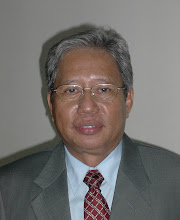SUNGAI SARAWAK BARRAGE AS A CRITICAL STRUCTURE TO SAFE GUARD KUCHING CITY OF SARAWAK STATE, MALAYSIA
Kuching city of the Sarawak State, Malaysia is located on a flat alluvial plain 30 km away from the sea. The city is divided to north and south parts by the tidal Sungai Sarawak. The low-lying city is vulnerable to high tides, where the city had experienced recorded spring tides as high as 6 m. The worst scenario of flooding happens when high runoff from the upstream catchments coincided with high tides from the downstream. In 1998, a barrage is established near estuary to protect the city. The structure is the property of the State Government under the care of Sarawak Rivers Board, but the operation is managed by a private contractor. The Sungai Sarawak Barrage has been in operation for 10 years and it is increasingly playing critical roles as a center of flood management for the region. The operation team extensively regulates and maintains the quality hydrological data of the river system with its telementry system. Recently, it functions also as a flood warning center entrusted by the State Government to act first-handly in the case of flood emergency. The experience of public-private partnership of the barrage management that warrants its successful implementation for a decade in Kuching is something useful to be learnt.

Comments